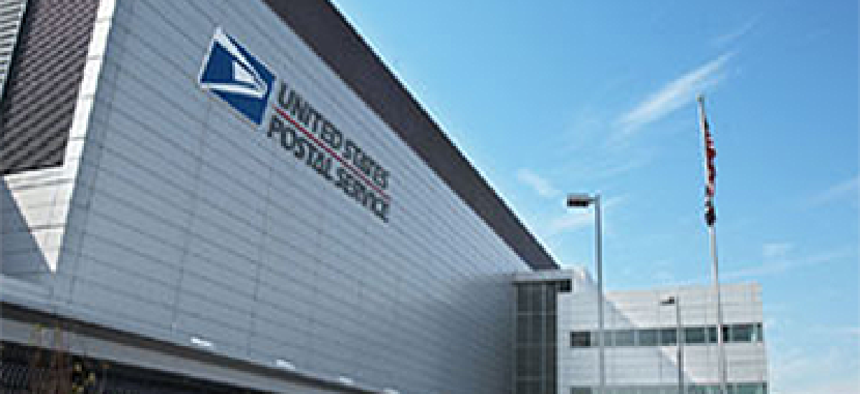USPS goes all-in on agile development

Three years after the first pilot, the Postal Service has delivered more than 50 projects using agile methodologies.

Three years after the first pilot, the Postal Service has delivered more than 50 projects using agile methodologies. (USPS photo)
The U.S. Postal Service's information technology infrastructure is one of the largest and most complex in the world, and its growing preference for agile software development methods over its old-school waterfall methodology is having a positive effect on both the agency's bottom line and the mailing industry as a whole.
USPS created its agile development adoption strategy in January 2010, launching agile pilot projects in each of its four development centers that set the framework for agile development officially replacing the waterfall methodology in March 2013 for all almost all its projects.
One such project, the Mail Transport Equipment Online Ordering System (MTEOR), now allows mailers to order and track mail transport equipment (MTE) online, such as the sacks, trays, pallets and wheel containers that contain mail in transit between facilities.
Related: The Post Office's hidden cool factor
Prior to MTEOR, Mail Transportation Equipment Service Centers (MTESCs) across the country processed approximately 230,000 annual orders for USPS-purchased mailing equipment from large-volume mailers and 1,800 postal facilities via phone calls or emails -- with no good way of confirming , canceling, altering or tracking orders.
USPS knew this was a problem for the better part of a decade, but couldn't address it under waterfall methodology because project plans were too costly, according to John Edgar, vice president of IT for USPS.
But USPS again brought the problem to its IT shop 18 months ago, and this time the department created a cost and timeline based on an agile approach that incorporated fast deliverables and daily scrum sessions between IT officials and customers to ensure parties were always on the same page. In waterfall approaches, "IT goes off and builds something that 12 months later might not meet the customer's expectations," Edgar said, noting that in times of austerity and rapidly changing technology, that approach rarely makes sense.
"The intent was to find a way to deal with changes where we could be more responsive to changing customer expectations and raising the visibility of what we were doing throughout the development's lifecycle back to our business partners," Edgar said. "We wanted to better partner with our business organizations, and maintain a more consistent and visible engagement between teams where we could prioritize requirement building so we get the most important things done first."
Agile development is nothing new to those in the private sector who have used it for a while, but within an organization as large as USPS – which employs more than 500,000 people – change rarely happens fast.
In MTEOR's case, though, it did.
In March 2012, MTEOR's funding was approved with a hard deadline to launch by September 2012 for MTESC's largest mailers, providing them a more efficient way to secure mail transport equipment.
Building on the success of the September launch, the second phase of the MTEOR project saw it introduced to USPS plants and smaller mailers in April 2013.
While the USPS would not disclose how much money MTEOR is saving the agency, USPS officials said they are very pleased with the results, especially in regards to cost avoidance.
The number of phone calls to MTESC's regarding order queries has decreased by 90 percent, and the USPS business team reports "no negative feedback from the mailing community" since MTEOR rolled out. That is significant considering MTESC mailers have placed more than 22,000 orders for MTE valued at $231 million since September 2012, and USPS plants have placed more than 3,500 orders of MTE valued at $33 million since April.
Because of MTEOR, USPS is collecting inventory data points from large mailers it never collected before, and it is further developing a new inventory reporting component for USPS plants to take advantage of, too.
"What made agile so valuable to us was that it had a hard deadline, whereas if we used a waterfall methodology, we'd probably only just now [June 2013] be planning on doing something," said Cathy Moon, who formerly managed MTE at USPS. She now works as a manager for USPS' Operations Integration and Support.
"From a mailer's perspective, MTEOR offers them the flexibility to control their own destiny – they can change orders or cancel orders, where before they didn't even have a way to confirm if an order was placed or if it's coming," Moon said.
Agile software development methodologies and best practices – Scrum, Scrumban, software engineering best practices and the like – are now applied to most every project within USPS' IT shop, Edgar said. In fact, USPS IT has delivered more than 50 projects through agile development methodologies, and 25 projects are currently active. Design teams work with customers "almost daily," and communication between parties is integral to a project's success.
So many project successes just three years into USPS' five-year agile adoption strategy roadmap helped spur the agency in March to declare that the agile development methodology will be the standard methodology for all projects unless an exception request is approved.
"Agile is a way we deliver solutions to our customers, and get those solutions faster and with a more successful conclusion to users, wherever they may be," Edgar said.



